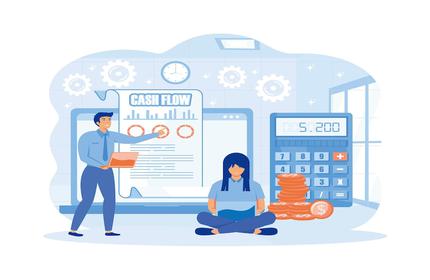For young professionals with high salaries, managing monthly cash flow involves more than just saving small amounts—it centers around enhancing the distribution of wealth to support both lifestyle choices and future ambitions. Increased disposable income typically leads to lifestyle inflation, making it essential to have strategic cash flow plans to prevent the "high income, low wealth" issue. The most effective strategies combine automation, intentional distribution, and alignment with your personalized spending goals.

Cash Flow Allocation by Goal
Move away from standard checking accounts—divide your income into targeted categories. Establish distinct accounts for "Essentials" (rent, bills), "Growth" (investments, retirement), "Lifestyle" (entertainment, travel), and "Opportunity" (unexpected splurges or impromptu travel). Automate transfers so that each category is funded the moment you receive your paycheck. This practice prevents overspending on non-essential items while ensuring resources are available for both growth and enjoyment.
Active Subscription Management
Wealthy young adults frequently gather subscriptions they seldom utilize. Implement applications that monitor subscription activity and establish monthly reminders for services that are underused (for instance, a premium gym subscription used fewer than three times). Engage with providers to find "pause" features or loyalty discounts, or trade unnecessary subscriptions for tiered options that align better with your usage. This releases cash without compromising on the services you appreciate.
Strategic Credit Card Management
Utilize premium credit cards to temporarily cover necessary expenses for a duration of 30-45 days. Charge regular bills (such as utilities and subscription services) to a card that offers an extended grace period, and then pay off the balance completely with your income. This strategy allows you to maintain cash in high-interest savings accounts for longer, accruing interest prior to payment. Just be cautious and ensure you do not carry any balances—this strategy is only effective with responsible repayment habits.

If you receive bonuses, commissions, or additional income from side ventures, establish a "variable income reserve" account. During months of increased earnings, reserve 20% of your variable income in this account; during leaner months, utilize this fund to manage lifestyle costs instead of depleting savings. This approach stabilizes your cash flow, allowing for consistent spending without anxiety over income variations.
Pre-Commit to Investment Purchases
Designate a portion of your monthly cash flow for "investment purchases"—spending on yourself or assets that appreciate. This could involve enrolling in a masterclass in your field, acquiring a portion of an art piece, or purchasing equipment for a side project. By treating these as essential and unavoidable expenses each month, you transform cash flow into future value rather than allowing it to be consumed by impulse purchases.

Analyzing Lifestyle Trade-Offs
For every significant discretionary expense (like a weekend trip or designer item), evaluate its "opportunity cost" relating to potential growth. For instance, spending $2,000 on a vacation corresponds to two months of contributions to a Roth IRA. Record these trade-offs in a straightforward spreadsheet to remain aware of how your spending decisions affect your financial trajectory. It’s not solely about refusal—it’s about making informed decisions.
Managing monthly cash flow for young high earners is about having authority rather than limitations. By categorizing funds, reviewing subscriptions, and aligning expenditures with growth, each paycheck becomes a means to generate wealth while still enjoying what the present has to offer. It’s a delicate balance that prepares you for future success without sacrificing the memorable experiences of your 20s and 30s.

Family Budget: Path to Financial Freedom

The Psychology of Risk: Understanding Your Investment Comfort Zone

Decoding Funds: Key Metrics Uncovered

How to Leverage Behavioral Finance for Smarter Investments

Best Investment Apps

Dollar-Cost Averaging Benefits

Understanding Artificial Assets: Bridging Crypto with Traditional Financial Instruments
